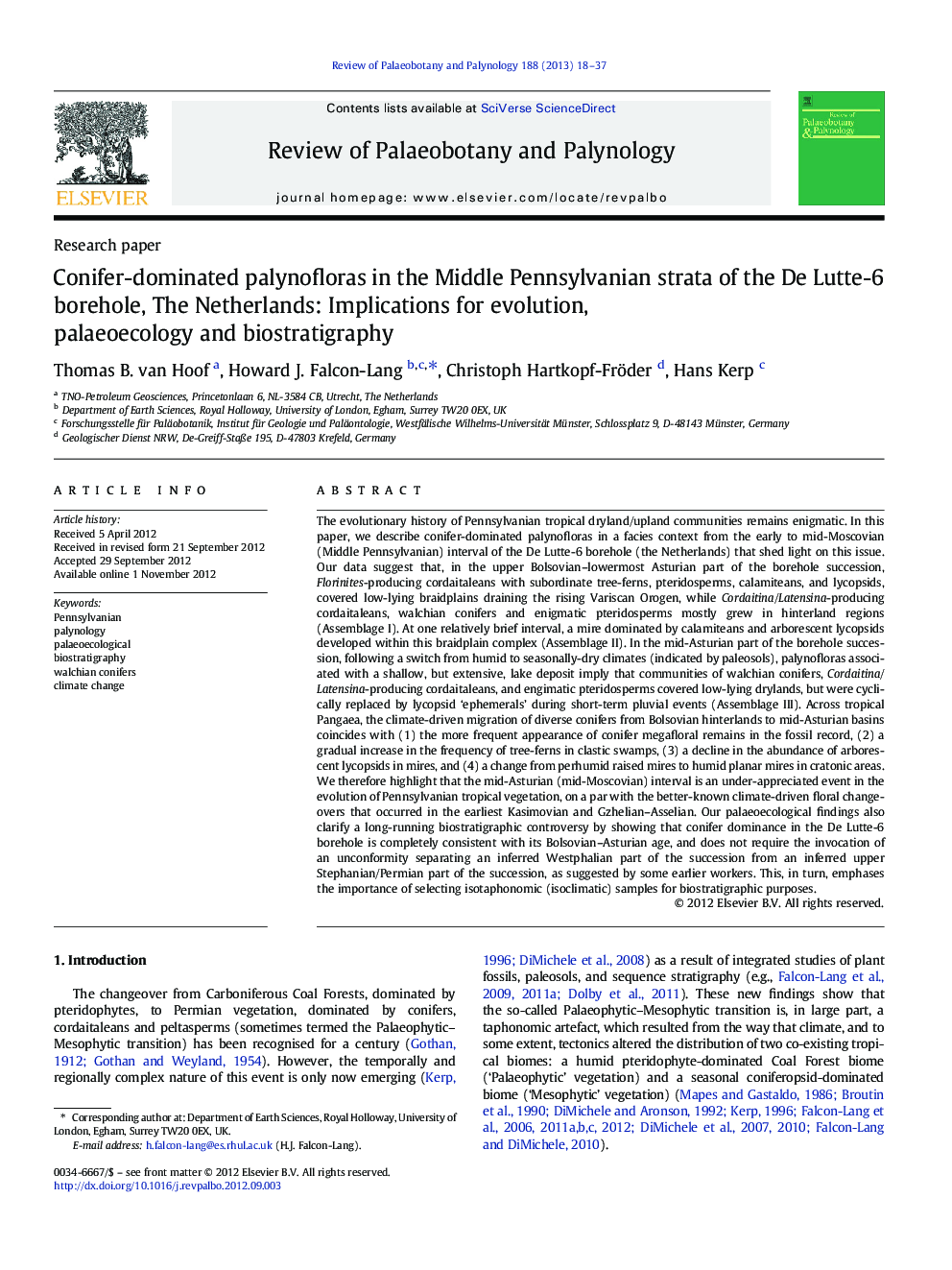| کد مقاله | کد نشریه | سال انتشار | مقاله انگلیسی | نسخه تمام متن |
|---|---|---|---|---|
| 4750393 | 1642510 | 2013 | 20 صفحه PDF | دانلود رایگان |

The evolutionary history of Pennsylvanian tropical dryland/upland communities remains enigmatic. In this paper, we describe conifer-dominated palynofloras in a facies context from the early to mid-Moscovian (Middle Pennsylvanian) interval of the De Lutte-6 borehole (the Netherlands) that shed light on this issue. Our data suggest that, in the upper Bolsovian–lowermost Asturian part of the borehole succession, Florinites-producing cordaitaleans with subordinate tree-ferns, pteridosperms, calamiteans, and lycopsids, covered low-lying braidplains draining the rising Variscan Orogen, while Cordaitina/Latensina-producing cordaitaleans, walchian conifers and enigmatic pteridosperms mostly grew in hinterland regions (Assemblage I). At one relatively brief interval, a mire dominated by calamiteans and arborescent lycopsids developed within this braidplain complex (Assemblage II). In the mid-Asturian part of the borehole succession, following a switch from humid to seasonally-dry climates (indicated by paleosols), palynofloras associated with a shallow, but extensive, lake deposit imply that communities of walchian conifers, Cordaitina/Latensina-producing cordaitaleans, and engimatic pteridosperms covered low-lying drylands, but were cyclically replaced by lycopsid ‘ephemerals’ during short-term pluvial events (Assemblage III). Across tropical Pangaea, the climate-driven migration of diverse conifers from Bolsovian hinterlands to mid-Asturian basins coincides with (1) the more frequent appearance of conifer megafloral remains in the fossil record, (2) a gradual increase in the frequency of tree-ferns in clastic swamps, (3) a decline in the abundance of arborescent lycopsids in mires, and (4) a change from perhumid raised mires to humid planar mires in cratonic areas. We therefore highlight that the mid-Asturian (mid-Moscovian) interval is an under-appreciated event in the evolution of Pennsylvanian tropical vegetation, on a par with the better-known climate-driven floral changeovers that occurred in the earliest Kasimovian and Gzhelian–Asselian. Our palaeoecological findings also clarify a long-running biostratigraphic controversy by showing that conifer dominance in the De Lutte-6 borehole is completely consistent with its Bolsovian–Asturian age, and does not require the invocation of an unconformity separating an inferred Westphalian part of the succession from an inferred upper Stephanian/Permian part of the succession, as suggested by some earlier workers. This, in turn, emphases the importance of selecting isotaphonomic (isoclimatic) samples for biostratigraphic purposes.
► We re-analyse palynology of the De Lutte-6 borehole in a facies context.
► Findings elucidate nature of Pennsylvanian dryland ecosystems.
► Conifers moved from the hinterlands to basins in the earliest Asturian.
► Results resolve a long-running biostratigraphic controversy.
Journal: Review of Palaeobotany and Palynology - Volume 188, 3 January 2013, Pages 18–37